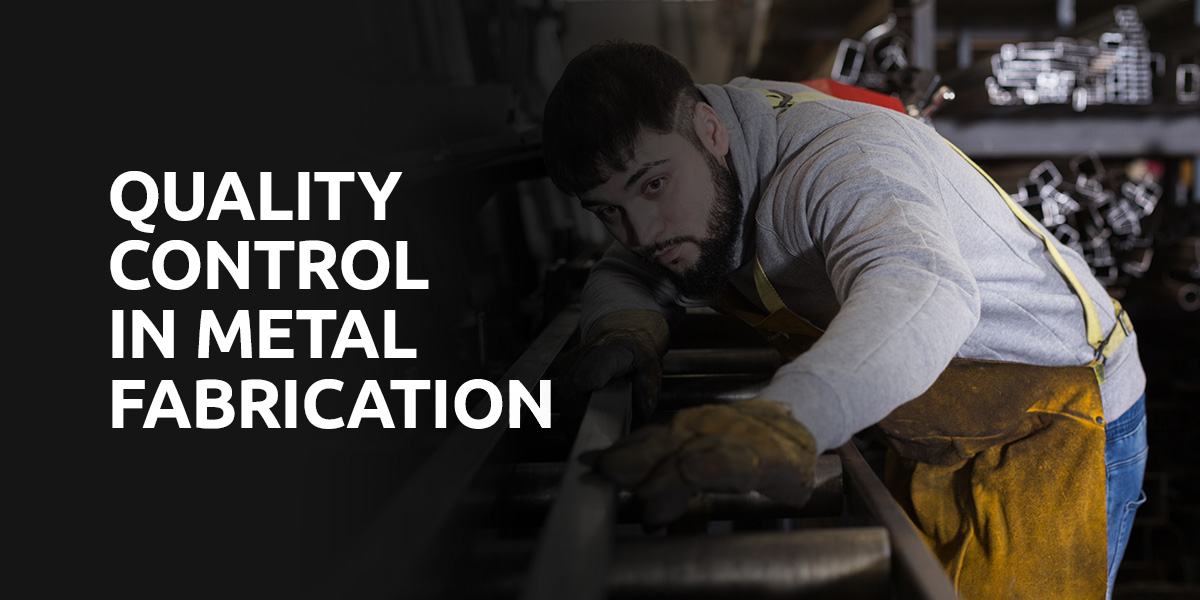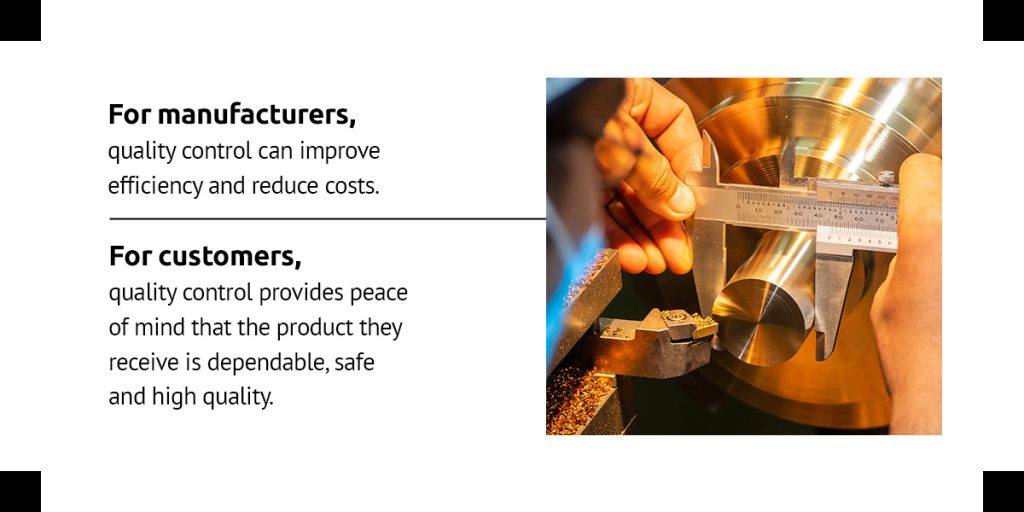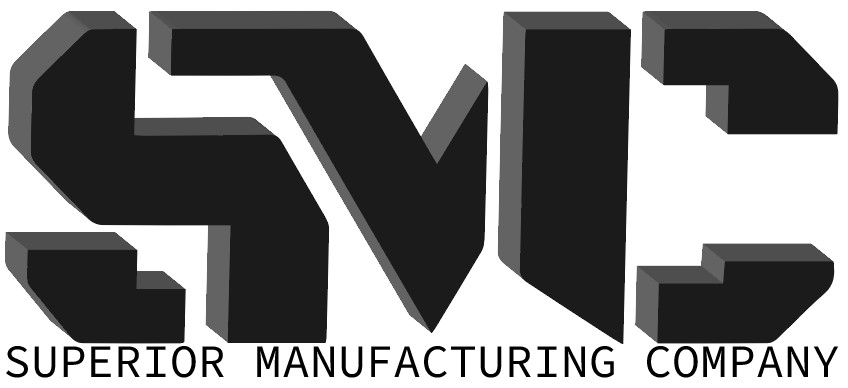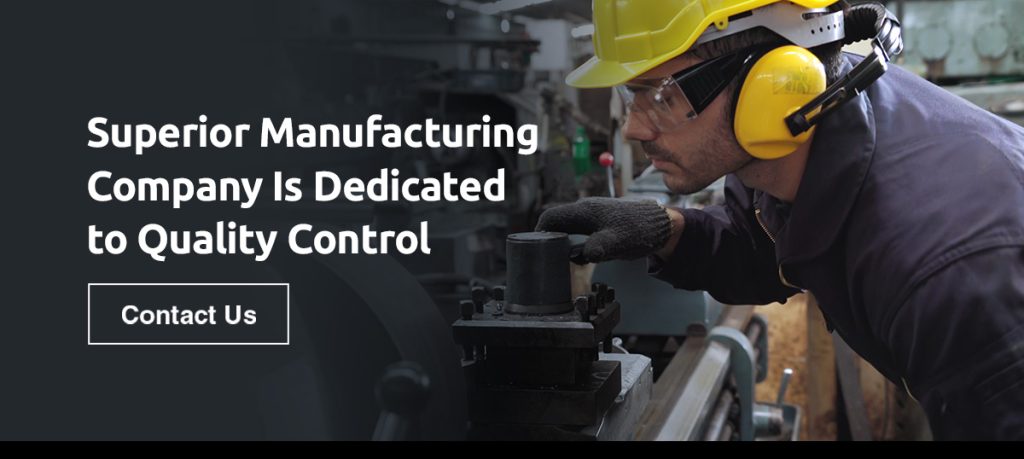
The metal fabrication process is complex and intricate, involving multiple production steps. From cutting and shaping to welding and finishing, each stage requires close attention to detail and precision. Quality control is essential throughout the metal fabrication process to ensure the final product meets the required specifications.
This article discusses quality control in metal fabrication, including what it is, why it’s important, how to achieve it and how it benefits both manufacturers and customers.
What Is Quality Control in Fabrication?
Quality control in fabrication refers to the measures, procedures and techniques manufacturers use to ensure their products meet required specifications and are of consistent quality. Quality control involves checking and verifying that the product is made according to the design requirements, materials and manufacturing processes established for it.
Quality control in fabrication typically involves various methods, such as the following:
- Visual inspections
- Dimensional checks
- Statistical process control
- Non-destructive testing methods
Implementing quality control measures is the key to consistency and ensuring fabricators and customers understand the expectations of the finished product. Quality control is instrumental in establishing credibility as a trusted metal fabricator. The ultimate goal of quality control in fabrication is to ensure the final product is consistent, reliable and meets the customer’s requirements.
Why Is Metal Fabrication Quality Control Important?
Quality control in metal fabrication is important for many reasons. Most critically, quality control ensures the final product meets the required specifications. This is crucial in industries that use metal parts for applications such as automotive, aerospace and medical devices. Any deviation from the specifications needed in these applications could have dire consequences, including safety hazards and product failure. With quality control measures in place, manufacturers can minimize safety risks and ensure the end product is reliable and consistent.
Additionally, quality control measures help manufacturers identify and address production issues early on, ultimately saving time and money. By detecting problems early in production, manufacturers can make adjustments and corrections before the product is complete, avoiding costly rework. This saves money and shortens the time required to complete the project, allowing manufacturers to meet deadlines and deliver products more efficiently.
How to Achieve Quality Control in Fabrication
You can use several methods to achieve quality control in metal fabrication. Here are three common ways:
- Inspection: Inspection is one of the most critical aspects of quality control. It involves checking the product at various production stages to ensure it meets the required specifications. This can include visual inspections, dimensional checks and non-destructive testing methods, such as X-ray and ultrasonic testing.
- Statistical process control (SPC): SPC involves monitoring the production process over time to identify trends and patterns that could indicate potential problems. By tracking data such as the number of defects, manufacturers can determine when the process deviates from the norm and make adjustments as necessary.
- Continuous improvement programs: Continuous improvement programs such as Lean Manufacturing and Six Sigma focus on identifying and eliminating waste and inefficiencies in the production process, ultimately leading to improved quality and reduced costs.
Benefits of Quality Control in Metal Fabrication

Implementing quality control measures in metal fabrication provides several benefits to both manufacturers and customers. For manufacturers, quality control can improve efficiency and reduce costs. Catching issues early helps manufacturers avoid reworking parts, ultimately reducing production costs. Quality control also helps manufacturers pinpoint areas for improvement, allowing them to refine their processes and become more competitive in the market.
Quality control also promotes the safety of metal fabrication employees. Metal fabrication involves heavy-duty machinery and equipment that can be dangerous if operators aren’t properly trained. Metal fabrication companies must ensure their employees’ safety and well-being, and quality control measures can help them do so by training workers to use machines and equipment appropriately.
For customers, quality control provides peace of mind that the product they receive is dependable, safe and high quality. Manufacturers build trust with their customers and ultimately improve their reputation in the industry when they fabricate and deliver high-quality metal products.
5 Essentials of Quality Control
Consider the following quality control essentials as you develop your own metal fabrication quality control checklist.
- Establishing standards: Establishing clear and concise standards for your products is the first essential of quality control. This step is critical because your standards will drive the rest of your quality control measures. Base these standards on your clients’ requirements and expectations, as well as industry standards and regulations. Once you’ve established standards, communicate them clearly to all employees involved in the production process.
- Documenting procedures: The second essential of quality control is to document the procedures you use to manufacture products. Documentation should include instructions for each step of the production process and any required testing or inspection procedures. Documenting procedures ensures a consistent production process all employees can follow.
- Training employees: Training employees on the established standards and procedures is the third essential of quality control. The training aims for all employees to understand the importance of quality control and how to follow the established procedures. Proper training promotes safety and helps prevent errors and inconsistencies in the production process.
- Monitoring and measuring performance: The fourth essential of quality control is to monitor and measure the performance of the production process. You can do so through various methods like visual inspections, dimensional checks and statistical process control. Monitoring and measuring performance can warn you of potential problems early in production, allowing you to take corrective actions at the best time.
- Continual improvement: The fifth essential of quality control is continually improving the production process. Continual improvement involves analyzing the data gathered during monitoring and measuring performance and identifying areas for improvement. Improving the production process leads to higher-quality products and reduced costs.
Superior Manufacturing Company Is Dedicated to Quality Control
Superior Manufacturing is a leader in precision metal fabrication with more than 75 years of industry experience, and businesses turn to us for optimally-engineered metal components.
When you need bulk orders of fabricated metal parts, you can trust Superior Manufacturing to deliver reliable, consistent goods verified by our quality control program. You’ll benefit from the fact that we’re a single-source supplier — we do everything in-house, which gives us complete control over the quality of your products.
Contact Superior Manufacturing today and experience the advantages that make us superior:
- Proven expertise
- Exceptional quality
- Just-in-time (JIT) delivery
- Cost-effective manufacturing solutions
- Full-service capabilities, from product design to production manufacturing
We look forward to hearing from you!


